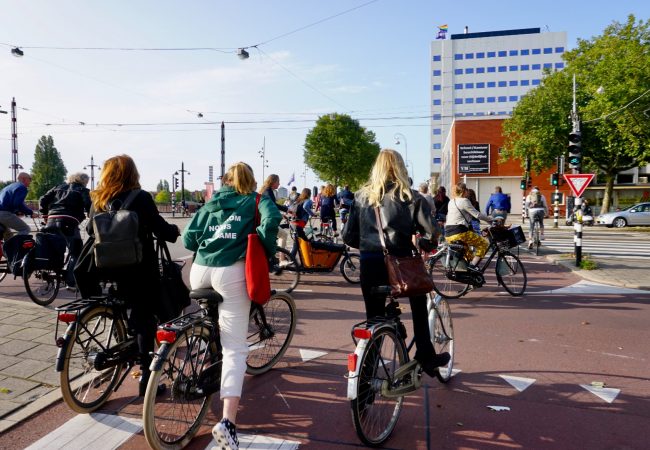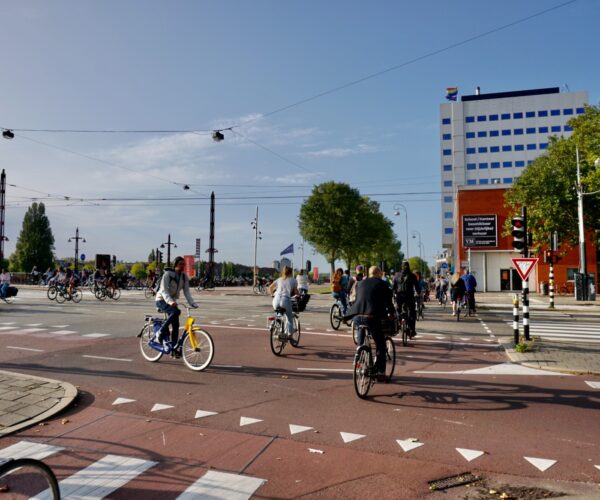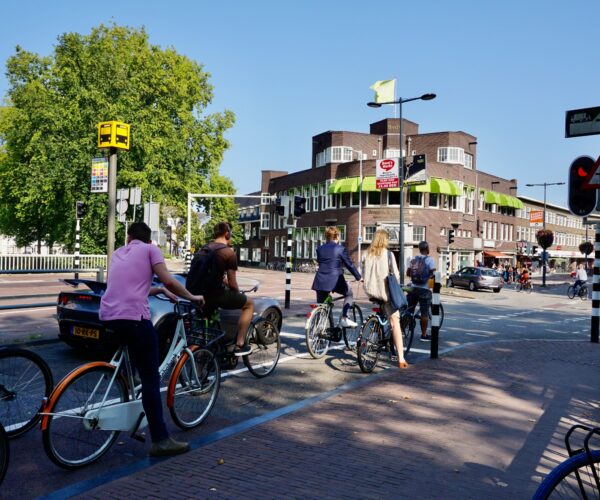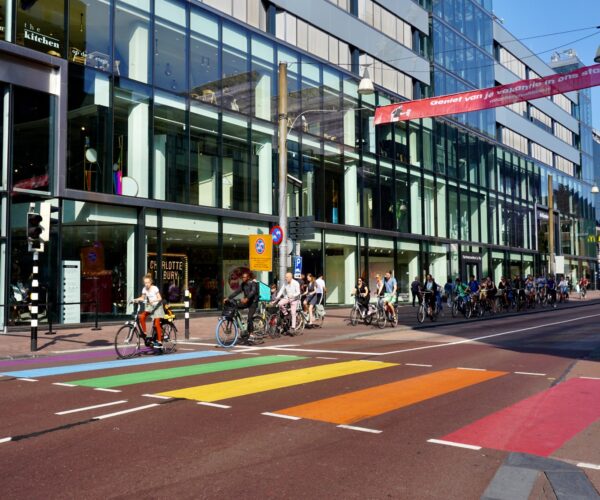Intelligent traffic control systems (iVRI) adjust traffic lights to the traffic situation, which promotes traffic flow. The great advantage is that automobile drivers drive more energy-efficiently because they have to brake and accelerate less often. iVRI can also prioritize heavy freight traffic over other types of traffic. This improves both traffic flow and durability by reducing additional CO2 emissions while waiting and raising it again for a traffic light. This promotes the use of the car in an energy-efficient way, but makes little sense if the government wants to discourage the use of the car in the inner cities.
iVRI can also be used for the flow of vehicles on cycle paths, making long queues for stop lights on cycle paths a thing of the past. The effect of this is especially significant during the week when there is a lot of commuting by bike. This number of cyclists will increase as municipalities increase their incentives for commuting by bicycle. By using iVRI in the right locations, this means no congestion and better flow on the bike paths. This is safer for cyclists, avoids annoyance due to long waiting times for bicycle stop lights, and the cyclist arrives at the destination faster. In certain situations, the improved flow on the bike paths is at the expense of the flow of car traffic. An additional advantage is that for the motorist, the threshold for choosing the bike is lowered: the motorist sees cyclists passing at a fast pace, while waiting time for stop lights gets longer and longer.
Multisensors has started to make this possible. A Bicycle Peloton Recognition/Intelligent Traffic Control System (iVRI) has recently started in Utrecht, and many will follow in various municipalities in the Netherlands next year. Based on the number of vehicles on the cycle path, the bicycle traffic light is activated in order to promote the flow on the cycle path and make it run effectively.







